🏆 Aly Recognized as World’s Top 2% Scientist, Ranks in Global Top 0.5% in Civil Engineering
(December 06, 2025)
Dr. Aly has been consistently recognized as one of the most influential researchers globally, earning the distinction of a World’s Top 2% Scientist in the career-long citation impact category.
This prestigious global ranking is compiled by Stanford University and Elsevier and is based on standardized metrics that measure the exceptional productivity and citation impact of a researcher's body of work.
Dr. Aly holds a specific rank of 325 out of 62,565 researchers in the Civil Engineering subfield, placing him firmly in the top 0.5% worldwide.
Dr. Aly has been listed in this prestigious global ranking for multiple years: 2020, 2021, 2023, 2024, and 2025.
🌬️ Research Highlight: The Power of Wind (LSU Science Café)
(September 28, 2021)
Dr. Aly was the featured speaker at the LSU Science Café, presenting "The Power of Wind". The presentation highlighted his work in wind engineering and resilient infrastructure, especially following Hurricane Ida.
Watch the full presentation: http://www.youtube.com/watch?v=Qum2zPmMzPI
📰 Media Highlight: Protecting Critical Infrastructure
(October 18, 2021) | Business Report
Business Report featured Dr. Aly's work on enhancing the resilience of infrastructure against natural disasters.
The article highlighted the efforts of the WISE research program to use large-scale wind testing facilities to accurately simulate hurricane forces on structures. This research provides data-driven solutions to inform building codes and develop smart control systems (dampers) that improve the safety and sustainability of infrastructure against multi-hazard events.
Read the story here: https://www.businessreport.com/business/lsu-professor-studying-ways-to-protect-infrastructure-from-natural-disasters
🔬 Outreach: Scientists & Teens Exploring Our World
Date: Thursday, November 29, 2018
Location: Carver Branch Library (Baton Rouge, LA)
Dr. delivered an engaging talk for local teens as part of the Teen Science Café Network, hosted by the LSU EnvironMentors program.
The presentation focused on the LSU Windstorm Impact, Science & Engineering (WISE) research program, demonstrating to students how engineers approach complex, real-world problems. Dr. Aly used stunning images and videos to illustrate the development of building designs and infrastructure more resistant to severe windstorms. The event concluded with a discussion and an activity related to hurricane engineering.
📅 Conference Leadership: EMI 2019 Mini-Symposia Call for Papers
(October 15, 2018)
The 2019 Engineering Mechanics Institute (EMI) conference will take place in June 18-21, 2019 at Caltech, Pasadena, CA. We would like to invite you to present your recent research (PPT Presentation(s)) in the following mini-symposia:
MS#29. Advances in Experimental, Analytical and Computational Wind Engineering
MS#55. Advances in Vibration Control in Structures under Single and Multiple Hazard Loads
These mini-symposia are sponsored by the EMI Fluid Dynamics Committee, the EMI Dynamics Committee, and the EMI Structural Health Monitoring & Control Committee. Abstract submission for EMI 2019 is now open https://emi2019.exordo.com/login(November 30, 2018 – January 30, 2019), however, if you are interested in delivering a presentation, please send a tentative title of your abstract to aly@lsu.edu ASAP.
MS#29. Advances in Experimental, Analytical and Computational Wind Engineering
Organizers: Aly Mousaad Aly (aly@lsu.edu) and Michele Barbato
Keywords: Wind tunnel; CFD; Scale issues; Atmospheric boundary-layer; Aerodynamics; Aeroelasticity; Fluid-structure interaction; Flow-induced motions.
MS#55. Advances in Vibration Control in Structures under Single and Multiple Hazard Loads
Organizer: Aly Mousaad Aly (aly@lsu.edu)
Keywords: Vibration control; Semi-active devices; Smart dampers; Active control; Passive control;
Abstract: Wind, wave, and seismic hazards, coupled with aging and vulnerable structures, pose the potential for damage and loss of life and property. Multihazard forces can wreak catastrophic damage to buildings, bridges, wind turbines, offshore structures, and the infrastructure in general. Consequently, vibration control of structures is indispensable for their safety and serviceability under multihazard loads. Several control techniques can be employed. In this session, we solicit high-quality presentations of original research focused on the state-of-the-art techniques and methods used to control structures under single and multiple hazards. Potential topics include but are not limited to the following:
- Vibration control in structures for wind and seismic hazards;
- Vibration control in offshore systems for wind and waves;
- Vibration control in wind turbines;
- High-rise buildings,
- Passive control;
- Semi-active control.
📚 Publication: New EMI Publication (2018)
(Posted: October 1, 2018)
Dr. Aly Mousaad Aly served as a lead editor for the new publication:
"Wind Engineering for Natural Hazards – Modeling, Simulation, and Mitigation of Windstorm Impact on Critical Infrastructure"
- Editors: Aly Mousaad Aly, Ph.D., and Elena Dragomirescu, Ph.D.
- Series: Trends in Engineering Mechanics Spec. Pub. (TEMSP) TEMSP 3
- Publication Details: American Society of Civil Engineers (ASCE) Library, 2018 / 238 pp.
This special publication features selected papers from the EMI 2016 conference, directly addressing the challenge of designing critical infrastructure—such as high-rise buildings, long-span bridges, and power transmission lines—to withstand extreme winds.
Key Topics Covered:
The volume provides up-to-date content on:
- Optimal design wind loads.
- Wind response control with tuned mass dampers.
- Simulation of turbulent wind effects and stochastic dynamics.
- Performance-based design and wind-adaptable design strategies.
- Forces induced by non-synoptic events like downbursts and tornado-like vortices.
This resource is vital for engineers and scientists committed to developing a more resilient and sustainable built environment.

EMI 2018 ConferenceThe next Engineering Mechanics Institute (EMI) conference will take place in May 29 – June 1, 2018 at M.I.T., Cambridge MA. We would like to invite you to present your recent research (PPT Presentation(s)) in the following mini-symposia:
- MS 22 Advances in Experimental, Analytical and Computational Wind Engineering
- MS 21 Vibration Control in Structures to Achieve System-Level Performance under Single and Multiple Hazard Loads
These mini-symposia are sponsored by the EMI Fluid Dynamics Committee, the EMI Dynamics Committee, and the EMI Structural Health Monitoring & Control Committee. Abstract submission for EMI 2018 is now open (October 15, 2017 – January 31, 2018), however, if you are interested in delivering a presentation, please send a tentative title of your abstract to aly@lsu.edu ASAP.
Deterministic analysis methods, even based on detailed modeling, may not precisely reflect the reliability of engineering structures. The alternative is to perform risk analysis under the probabilistic assumption and propagate the uncertainty in different design variables. This is a crucial task, especially for structures subjected to shock and vibration. The design and analysis of ordinary structures subjected to single and multiple hazard dynamic loads are real-world related engineering applications: critical dams and nuclear power plants under hydrodynamic shock and earthquake impact; synoptic and non-synoptic wind-induced structural vibrations; vehicle-induced vibrations in bridges; wind, wave, and seismic impact on offshore structures and wind turbines; earthquake-induced vibrations in structures; and so on. In this special journal issue, we solicit high-quality articles of original research focused on the state-of-the-art techniques and methods employed in risk, reliability, and uncertainty quantification in infrastructure systems, with or without control/mitigation devices, subjected to shock and vibration. We welcome theoretical and application papers of high technical standards across various disciplines, thus facilitating awareness of techniques and methods in one area that may apply to other areas. We seek high-quality submissions of original research and review articles on all aspects related to risk, reliability, and uncertainty in shock and vibration applications. For example, fundamental research and practical applications in civil, mechanical, and aerospace engineering.
The topics include, but are not limited to, the following:
- Safety, reliability, risk, and life-cycle performance of structures and infrastructures subjected to shock and vibration
- Uncertainties associated with extreme return periods of wind and earthquake loadings acting on structures
- Reliability considerations for wind turbines under multiple hazard dynamic loads
- Risk, reliability, and uncertainty quantification in the evaluation of the response of structures to windstorms and earthquakes
- Risk, reliability, and uncertainty quantification in passive, active, and semiactive structural control
- Uncertainties in complex dynamic modeling and control of structures under multihazards
- Reliability in structural monitoring under shock and vibrations
- Modelling and analysis of metamaterials for vibration mitigation
- Effects of passive, active, and semiactive structural control on reliability and sustainability of aging structures
- Risk, reliability, and uncertainty in real-time hybrid simulation
The submission Deadline is Friday, 27 April 2018. Publication Date September 2018. Papers are published upon acceptance, regardless of the Special Issue publication date.
STEM Expo

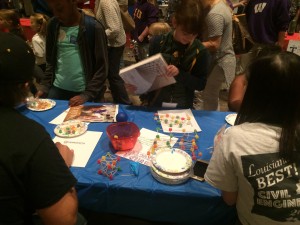
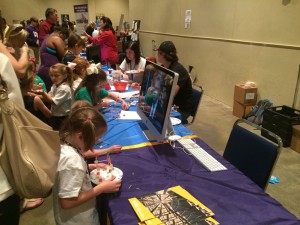
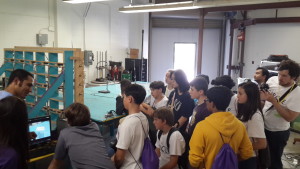
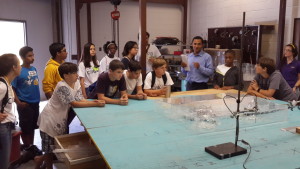
WISE TEAM teaching elementary/middle/high school students how to build resilient structures, and how wind tunnel experiments are executed.
Assistantships for Ph.D. Students (Wind Engineering/Structural Control)
The Windstorm Impact, Science & Engineering (WISE) research program at Louisiana State University invites applications for Ph.D. student positions in the area of Wind Engineering and Structural Control. Particular preferences will be given to students with prior experience in structural dynamics and control:
- Programming with MATLAB;– Active/Semi-active control of structures;– Wind tunnel testing/Shake table testing;– Publication in Journal/Conference proceedings.
Minimum Requirements:B.S. and M.S. in Mechanical Engineering, Civil Engineering, or related fields. Additional admission requirements (GRE, GPA, TOEFL/IELTS) are posted on the Civil Engineering Department Webpage http://www.lsu.edu/eng/cee/academics/graduate/index.php.
Qualified candidates will receive generous stipend and exemption from tuition until graduation. For interested applicants, please send your CV with a list of publications (if any), English test results (if English is not your native language), GPA, and GRE score to Dr. Aly at aly@lsu.edu.
LSU Students Developed Pod that Can Travel 500 mph
LSU Engineers Test High-Speed Travel Pod at SpaceX Hyperloop Competition
Special ASCE Publication (closed)
Currently, we are receiving papers for a Special ASCE Publication entitled "Wind Engineering in Natural Hazards". This publication is sponsored by the ASCE/EMI Fluid Dynamics Committee. We would like to invite you to contribute with a 10-20 pages research article. In this publication, we solicit papers (original research and/or review articles) focused on recent advances in experimental, computational, multi-scale, and/or multi-physics investigations of problems in wind engineering of structures. The topics may include, but are not limited to, recent advances in wind tunnel testing, wind effects on large roofs, wind effects on wind turbines, wind effects on vehicles/trains, synoptic/non-synoptic wind processes, and/or computational wind engineering. If you are interested in contributing to this ASCE publication, please send your paper to aly@lsu.edu ASAP.
It is worthy to mention that all papers will go through a peer review process, and ASCE will publish only high quality papers: the materials should be original and the findings should be sounding. We will present each paper with peer review reports and ASCE will make the final decision on publication. We have invited top authors for this purpose, and we have received a number of quality papers. Your contribution to this ASCE publication is appreciated.
Please share these information with colleagues and researchers who might be interested in contributing with papers.
EMI 2017 ConferenceThe next Engineering Mechanics Institute (EMI) conference will take place in San Diego, California, in June 2017. I would like to invite you to present your recent research (PPT Presentation(s)) in the following mini-symposia:
- MS 98 Wind Engineering in Natural Hazards
- MS 93 Control of Structures for Multiple Hazards
These mini-symposia are sponsored by the EMI Fluid Dynamics Committee, the EMI Dynamics Committee, and the EMI Structural Health Monitoring & Control Committee. The deadline for abstract submission is January 15, 2017. However, if you are interested in delivering a presentation, please send a tentative title of your abstract to aly@lsu.edu ASAP.
Call for Papers: Vibration Control in Structures for Multihazard Loadings — Shock and Vibration
Wind, wave, and seismic hazards, coupled with aging and vulnerable structures, pose the potential for damage and loss of life and property. Multihazard forces can wreak catastrophic damage to buildings, bridges, offshore structures, and the infrastructure in general. Although an individual hazard may be more significant than the other, the rapid population growth and economic development have greatly increased the potential of exposure to multiple hazards. Current design codes and hazard mitigation strategies treat hurricanes and earthquakes as completely independent, which does not account for the increased risk to structures in regions where both hazards are present. Consequently, vibration control of structures is indispensable for the safety and serviceability of the infrastructure under multihazard loadings. To do so, several control techniques can be employed. In this Special Issue, we solicit high quality original research articles as well as review articles focused on the state-of-the-art techniques and methods employed in the control of structures under multiple hazards. Potential topics include but are not limited to the following:
- Vibration control in buildings for wind and earthquakes
- Vibration control in bridges for wind and seismic hazards
- Vibration control in offshore structures for wind and waves
- Vibration mitigation in flexible structures for improved resilience and performance under synoptic and nonsynoptic wind loadings
- Aerodynamic optimization under synoptic and nonsynoptic wind loadings for improved sustainability with resilience benefits
Manuscript Due: February 24, 2017First Round of Reviews: May 19, 2017Publication Date: July 14, 2017
Authors can submit their manuscripts through the Manuscript Tracking System.
2016 Annual ASCE Louisiana Section Spring Meeting.

Special issue on Wind Impact on High-Rise Structures: Load Characterization, Response Evaluation and Mitigation
Wind & Structures, Volume 21, Number 5, November 2015
National Weather Service The National Weather Service (NWS) website provides weather forecasts, public warnings, and other weather-related products for protection, safety, information, and education.
Call for Abstracts/Presentations, Mini-Symposium (EMI-MS-28): Fluid Dynamics in Natural Hazards – under EMI 2016 Conference, May 22-25, 2016
The EMI Fluid Dynamics Committee is sponsoring a mini-symposium "Fluid Dynamics in Natural Hazards" for the EMI 2016 conference that will take place in Nashville, TN, May 22-25, 2016. In this mini-symposium, we solicit presenting research results focused on recent advances in the area of Fluid Dynamics in Natural Hazards. Experimental, computational, multi-scale, and multi-physics investigations for problems in wind engineering of structures are welcomed. The topics for presentations may include wind engineering for civil engineering applications, windstorm, wave, and rain impact on the built environment, atmospheric boundary layer processes, boundary layer wind tunnel testing, synoptic and non-synoptic wind processes, testing protocols, and computational wind engineering. The purpose of this meeting is to expand collaboration among scientists, academicians, and practitioners in the area of Fluid Dynamics in Natural Hazards.For interested researchers please submit your abstract to the EMI 2016 website under the mini symposium title "EMI-MS-28: Fluid Dynamics in Natural Hazards", by October 15, 2015. Please contact Aly Mousaad Aly at aly@lsu.edu if you have any questions.

ASCE @ LSUThe American Society of Civil Engineers (ASCE) is a professional organization with a student chapter at LSU. ASCE @ LSU strives to familiarize the students with the profession and job opportunities by inviting professional engineers to speak at bi-monthly meetings.
Katrina & Rita – A Decade of Research & ResponseFriday, August 28, 2016.Louisiana State UniversityBaton Rouge, LA
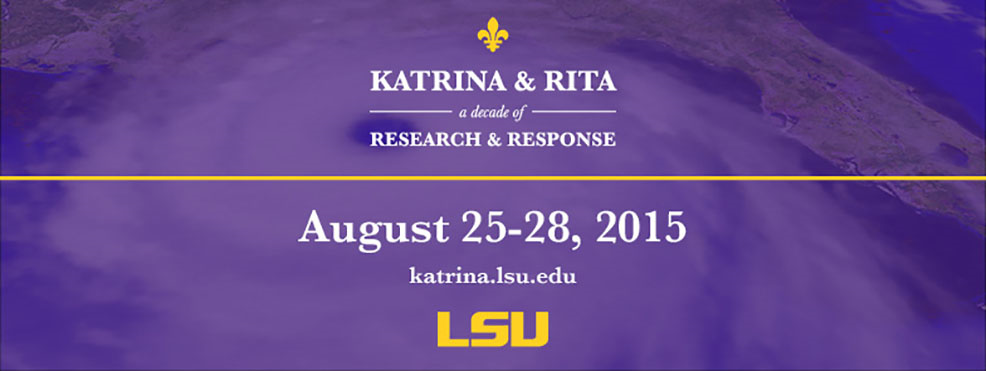

14ICWE International Conference on Wind EngineeringPorto Alegre, Brazil (2015)
Structural/Wind Engineering Lecture by Dr. Arindam Gan Chowdhury
Time: 3:30PM-4:20PM, Wednesday, Oct 15, 2014; Place: 1109 PFT, Civil and Environmental Engineering, LSU.
Center for Wind Hazard & Infrastructure Performance
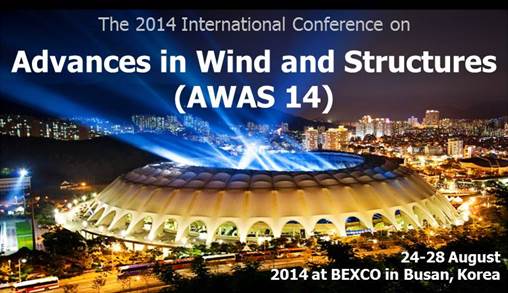
The 2014 Int'l Conference on Advances in Wind and Structures (AWAS14)BEXCO, Busan, Korea (August 24-28, 2014)
 The Sixth International Symposium on Computational Wind Engineering Hamburg, Germany
(June 8-13, 2014)
The Sixth International Symposium on Computational Wind Engineering Hamburg, Germany
(June 8-13, 2014)

International Conference on Sustainable Infrastructure Long Beach, California (November 6-8, 2014)
Structural/Wind Engineering Distinguished Lecture by Dr. Girma Bitsuamlak